Fast manufacturing techniques may help lower the cost of manufacturing parts. Product designers can expedite various processes through rapid prototyping and other methods. The result is better outcomes at more affordable prices.
Fast manufacturing techniques can help companies remain competitive in saturated markets. Rapid production methods can also lower manufacturing costs while protecting project integrity. However, manufacturers must consider the pros and cons of expediting parts, materials, and systems.
Companies rush production for a thousand reasons. Those reasons include contract delivery dates, supplier concerns, custom client requests, and inventory damages.
“Hurrying the production line isn’t always about making more money. Sometimes, it’s about staying afloat.”
Rushing orders can be stressful and may require a strategy. How do savvy project managers use fast manufacturing to satisfy evolving industry demands? Is it possible to expedite production without increasing overhead costs? Here is what you need to know.
Table of Contents
Why Fast Manufacturing Matters
5 Ways to Expedite Manufacturing without Increasing Costs
#4. Increasing Order Frequency
Other Ways to Save Money on Fast Manufacturing
Why Fast Manufacturing Matters
Rapid manufacturing is becoming increasingly crucial in today’s economy. Competitive brands want to be the first to introduce new products. However, they can’t rush production to the point of failure. Clients rely on rapidity and quality, or they’ll take their business elsewhere. Project managers must find feasible ways to shorten lead times without lengthening the bill.
Competitive companies and innovative designers rely on affordable parts manufacturing. The price they pay gets transferred to the consumer, which directly impacts the cost of living.
“Many engineers use rapid prototyping (RP) to eliminate design problems before mass manufacturing. Their efforts help mitigate production costs and inspire more consumer spending.”
Producers can also use fast manufacturing methods to save time and money on front-end details. They often employ rapid prototyping to discover specific design features that slow production and reduce product quality. Then they harness the latest manufacturing technologies to create high-precision outcomes regardless of the customer or deadline.
Fast Manufacturing Essentials
Companies can’t provide fast manufacturing services without first offering the essentials. Otherwise, their race to the finish line will end in disappointment. Rapid parts production requires due diligence to satisfy industry standards and pass inspections for ISO. Uncertified parts can be risky to make and distribute, not to mention detrimental to a company’s reputation.
Besides implementing organizational policies to expedite projects, manufacturers must also cover these crucial bases:
- Multiple Communication Avenues
- Shop-Supplier Rapport
- Engineering Excellence
- High-Quality Materials
- Sophisticated Machinery
- Modern Manufacturing Software
- Advanced Processing Methods
- Accurate Information
Savvy producers will help determine the root cause of delays to reduce lead times and cut costs. Their expertise can ensure fewer problems over the long term, giving clients more power to innovate new concepts. Rapid manufacturing is the key to continued customer loyalty and industry competitiveness, especially when it can help reduce production fees.

We offer fast, high-quality, tailored PROTOTYPING solutions for leading companies in a wide range of industries.
superior Rapid PROTOTYPING
5 Ways to Expedite Manufacturing without Increasing Costs
Most customers dislike waiting for manufacturers to finish making their products. They want swift services at low prices and would rather not deal with design issues and certification problems.
“Delays can cause frustration, leading many clients to find someone else to handle their orders. As a competitive manufacturer, that’s the last thing you want.”
The consequences are detrimental for manufacturers with extended lead times. Slowed production can go beyond a mere annoyance to become a costly mistake. Fast manufacturing means fewer risks and losses for the designer and producer. It also helps experts meet tight deadlines without busting the budget.
Managing speed to market is always a challenge. Waiting for a part and discovering issues leaves project managers little time to react. However, you don’t have to let peer competitors snag a more significant market share. Respond to industry changes and trends with fast manufacturing methods like these:
#1. Rapid Prototyping
Rapid prototyping (RP) is a commonly used method in fast-paced manufacturing. It helps eliminate minor mistakes and protects project integrity throughout development. Experts use rapid prototyping to fabricate scale models of various components. They then use those models to demonstrate a design’s features, abilities, and limitations.
Most facilities create a model or assembly using 3D CAD software. The three-dimensional rendering uses computer-aided design data to construct an accurate representation of a part. Engineers then test whether specific elements should be changed or left alone. This process helps expedite manufacturing without forcing clients to commit to mass production before perfecting their designs.
#2. 3D Printing
3D printing, or additive manufacturing, is a relatively new method for fast manufacturing. Operators can create a three-dimensional object using CAD/CAM programs or a digital model. Experts generally craft their digital models during the rapid prototyping process. However, fab shops can customize the approach based on a client’s Wishlist.
Fabricators typically use customized materials and tailored production methods to deliver precision at a fair price. They can also add material to an existing design or develop innovative alterations to underperforming products through 3D printing procedures. Always ask for more details since each project is unique.
#3. Domestic Supplying
Using a domestic supplier for materials and assembly components is a savvy way to reduce manufacturing costs. Project managers don’t have to account for a low-quality inventory when they trust their industry partners. They can also avoid paying outrageous fees for shipping and handling, with the savings passed directly to the consumer.
Local suppliers can provide essential materials faster and with less overhead. Many project leaders enjoy stateside accessibility because they can avoid language barriers and exporting complications. Some also appreciate the streamlined inventory management and reduction of potential delays.
#4. Increasing Order Frequency
Processing one or two bulk orders can be efficient for some clients. However, others might benefit from ordering smaller batches more frequently. Mass production projects require more time and attention, driving production costs without increasing quality. Meanwhile, smaller orders can help engineers catch tiny details while producing outcomes faster.
Manufacturing companies can also communicate more effectively with suppliers when they know what to expect from customers. They diligently anticipate needs and fulfill requirements without unnecessary delays. That means they’re typically ready to ship fabricated parts before the client’s request.
#5. Component Standardizing
Convert your components to standard measurements for the global economy. Save time and money on manual conversions, then simplify the manufacturing process for lower production costs. Use ISO guidelines to determine industry criteria and discover more ways to reduce prices regardless of the competition.
“Component standardization means giving designers and engineers a better platform for collaboration.”
They can tweak concepts more quickly and eliminate confusion among various teams. Efficient work equals more affordable manufacturing without compromising quality, performance, or authenticity.
Other Ways to Save Money on Fast Manufacturing
Accurately forecasting manufacturing costs can be tricky. Multiple factors impact the final price of services. However, teams can reduce expenditures and shorten lead times to streamline operations with these other savvy tactics:
- Service Kitting – Group various parts frequently used together into organized batches.
- Incentives – Install tiered bonus programs to inspire rapid turnarounds.
- Communication – Maintain consistent contact with the supply chain and clients.
Creating service kits helps a manufacturing company gather supplies and finish projects faster. Offering incentives for excellent performance can also boost morale and encourage quicker results. Fast manufacturing relies on due diligence and organization to cut costs without negatively affecting the design. Incorporate these techniques to sharpen your competitive edge.
Monitor the progress of various fast manufacturing methods to decide on the most effective strategy. Then address issues promptly to avoid frustrating delays and production cost increases. In the meantime, maintain constant contact with suppliers and designers to ensure maximum efficiency and the highest quality outcomes.
Factors of Fast Manufacturing
Manufacturing companies can only do so much to reduce production prices and expedite lead times. Several factors contribute to the outcomes and costs thereof. For example, most fabricators purchase supplies based on production schedules and inventory. However, some clients might first order parts that need rapid prototyping, assembly, or shipping.
Ill-equipped manufacturers need to order parts or materials before starting a project. Any supply chain delays could extend production times and increase overhead. Missing delivery deadlines and ignoring money-saving opportunities can also affect your price. Many firms use real-time tracking tools to help manage their expedited requests and ensure maximum efficiency.
Experts typically factor in the following elements when determining ways to streamline procedures:
- Expedite Request Frequency Per Buyer
- Request Response Mean Time
- Quantity of Open Expedites
- Quantity of Closed Expedites
- Successful Expedite Track Record
Assessing project success and cost for fast manufacturing is a complex challenge. Experts must gauge several concepts to avoid wasting time or resources. Meanwhile, many industries are cutting their carbon footprints through eco-friendly production techniques. Advanced methods could cost more upfront but offer substantial savings on the backend.
Another factor is the supplier’s consistency. Fabrication shops can’t control whether their vendors will provide the required materials on time. Manufacturing teams must plan for such delays and start designing as soon as possible. Rapid prototyping and 3D printing can help finalize concepts, ensure ISO compliance, and prepare crews for their turn at bat.
TIP: Order parts from ISO-certified manufacturers who offer rapid prototyping, 3D printing, and other fast manufacturing services.

We offer fast, high-quality, tailored PROTOTYPING solutions for leading companies in a wide range of industries.
superior Rapid PROTOTYPING
Fast Manufacturing Benefits
Haste makes waste, but fast manufacturing uses an intelligent approach to capitalize on advanced techniques. Modern production tactics include rapid prototyping, additive manufacturing (3D printing), CNC machining, and expedited assembly. These methods provide multiple advantages to competitive clients leading their industries into the next generation.
“Fast manufacturing benefits are evident across multiple sectors, providing low-cost products to an evolving economy.”
Here are some of the gains you can expect:
- Rapid Production of Complex Geometries
- Flexible Design Criteria
- Eliminated Concept Flaws
- Improved Product Quality
- Decreased Manufacturing Costs
- Reduced Operational Expenses
- Boosted Innovation
- Diminished Material Waste
- Enhanced Customer Experience
Meet changing industry demands with fast manufacturing processes. Then learn the advantages of rapid prototyping to get a head start on the competition. The best manufacturers will provide a comprehensive project outlook to help you stay on schedule without breaking the bank. They’ll also collaborate to eliminate design flaws and expedite production despite supply chain disruptions.
Human error delays and uncontrollable factors may affect the price tag. Fortunately, rapid prototyping can help mitigate some of the setbacks. Choose a manufacturer that reacts appropriately to challenges and responds quickly to expedite requests. Timely responses indicate an organized process, reliable supply chain, and advanced technique.
DID YOU KNOW: Fast manufacturing can help brands become authorities in their industries through consistency and originality.
Conclusion
Rapid manufacturing is essential because expediting is a part of life. Our evolving economy is fast-paced and competitive, so it relies on rapid ingenuity. Boost industry relevance and profitability when you take advantage of fast manufacturing procedures.
Conceptualizing a new product is only half the battle. Designers need reliable manufacturers with sophisticated methodologies to render precision outcomes. They also require an organized approach to avoid unnecessary delays that could increase production costs or give competitors an advantage.
Whether running a business or building a brand, dependable production of precision parts is crucial to maintaining market relevance. However, supply chain disruptions and concept complexities can increase costs, lengthen lead times, and risk lucrative opportunities. Communicating with teams and standardizing various elements is essential to ensure efficiency.
Choose fast manufacturing over traditional methods to achieve higher productivity at a lower cost. Eliminate human error through advanced technologies, automation, and efficient programming. Then offer your industry something exciting without fudging the budget. Expedited manufacturing services communicate a dedication to quality and customer satisfaction.
 About the Author
About the Author
James Murphy is the founder and CEO of HLH Rapid – a hybrid CNC machine shop fusing Western service and quality with Eurasian industry influences for over 14 years. His advanced enterprise uncovers cost-effective rapid injection molding techniques to remain unmatched by industry competitors. Murphy’s full-service fabrication and manufacturing methods span six dedicated zones, from 3D printing and vacuum casting to sheet metal prototyping and project management. His expertise also includes high-efficiency machining within strict yet volatile markets.
Murphy earned an MBA after becoming inspired by his father’s hands-on craftsmanship. As a budding entrepreneur, he taught English and studied Chinese to pursue pioneering objectives. His groundbreaking approach helps build the future by providing well-rounded manufacturing services to innovative Western businesses. When he’s not offering upscale RP and CNC, James enjoys art-house movies, Thai boxing, and spending time with his growing family.


